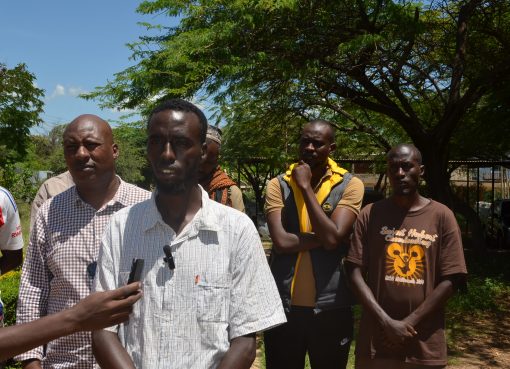Anti-FGM stakeholders in Garissa are raising concerns over Professional Female Genital Mutilation cases where some residents have resorted to use qualified doctors to do the cut rather than the old grandmothers who have in the past been majorly involved.
The stakeholders said that through public sensitizations on the harmful effects of FGM on young girls, instead of completely abandoning the practice, some people have resorted to use doctors who allegedly apply anesthesia on the victims to reduce pain and bleeding.
Zamzam Hassan, a project coordinator with Action Aid in Garissa while speaking to KNA said that, previously, people in the region had been practicing type 3 and 4 of FGM but now have moved to type 1.
FGM has been classified into four types where type 1 involves the partial or total removal of the clitoris or prepuce. Type two also involves the partial or total removal of the clitoris and the inner labia sometime with or without excision of the outer labia.
Type three involves narrowing of the vaginal opening by creating a covering seal while type four involves all other harmful procedures to the female genitalia for non-medical purposes such as pricking, incising, scraping and cauterizing the genital area.
“The biggest challenge we have had on the implementation of the Anti-FGM programs is now the community has moved to medicalize the FGM where they call health practitioners in their homes to administer FGM to reduce the severity of the cut,” Zamzam said.
“There is also introduction of Sunnah in FGM which is still considered as FGM and violates the rights of the girls and women,” she added.
The Chairman of the Garissa human rights activists Muktar Osman said that together with all state and non-state actors, they are doing all they can to end the vice by 2030.
“As organizations and leaders, we are doing all we can with collaboration with government agencies and religious leaders to bring an end to FGM in Garissa. We have reports that this practice is still continuing in the interior parts of the County,” Muktar said.
“We are not only seeking to end FGM but also other harmful practices such as gender based violence and child marriage so that we make sure that the rights of our children are safeguarded and respected,” he added.
Daniel Shikoli, a Communication Officer at Forum for African Women Educationalists (FAWE) Kenya on his part said that the organization, together with other like-minded agencies are striving on working with the community to bring an end to the vice.
“As FAWE Kenya we believe on reduction of FGM as a harmful practice that hinders development of girl child and young women education,” he said.
According to the Kenya Demographic Health Survey (KDHS) of 2022, countrywide prevalence of FGM is at 15 per cent while in Garissa County is still high at 83 per cent.
By Erick Kyalo





